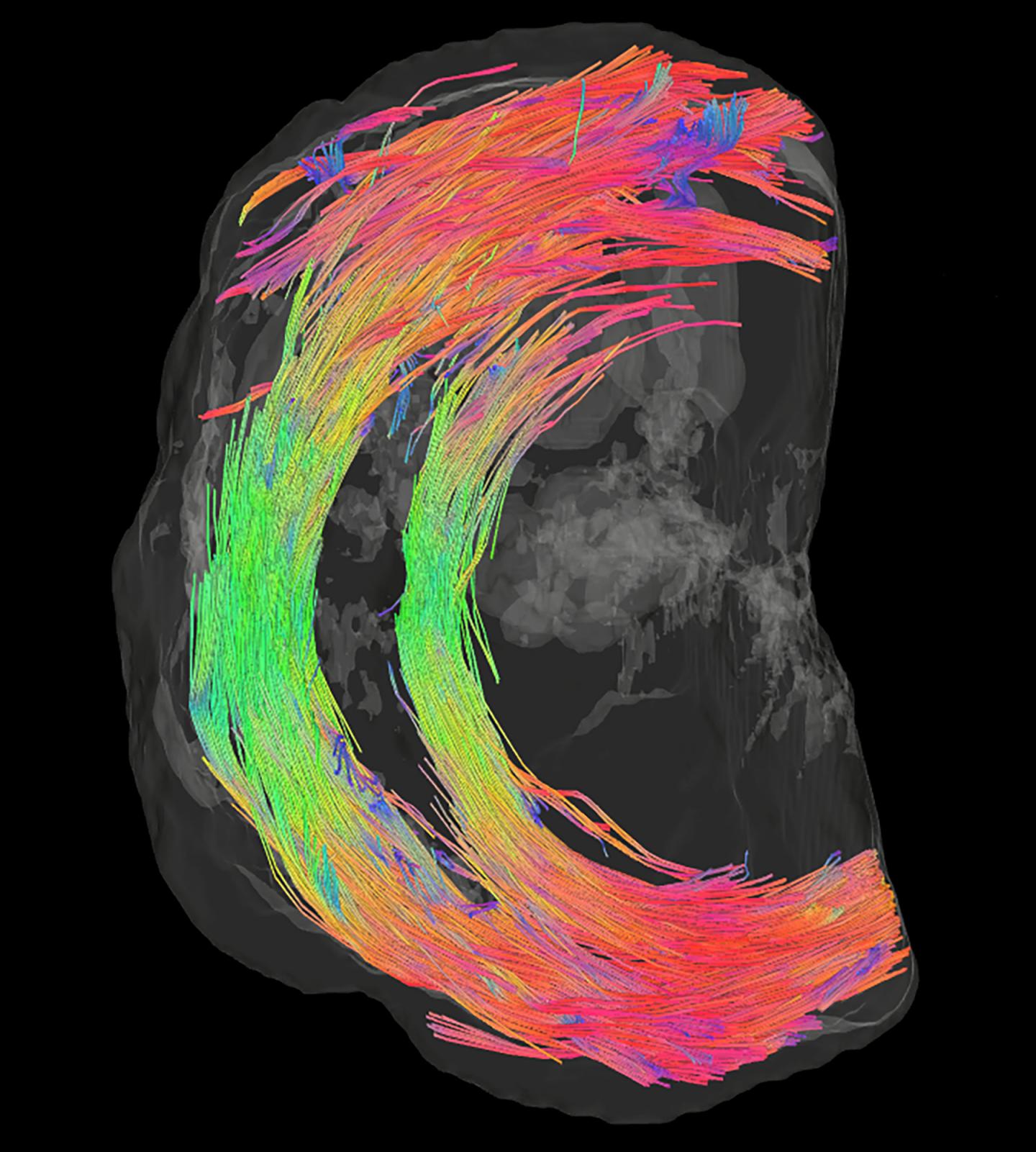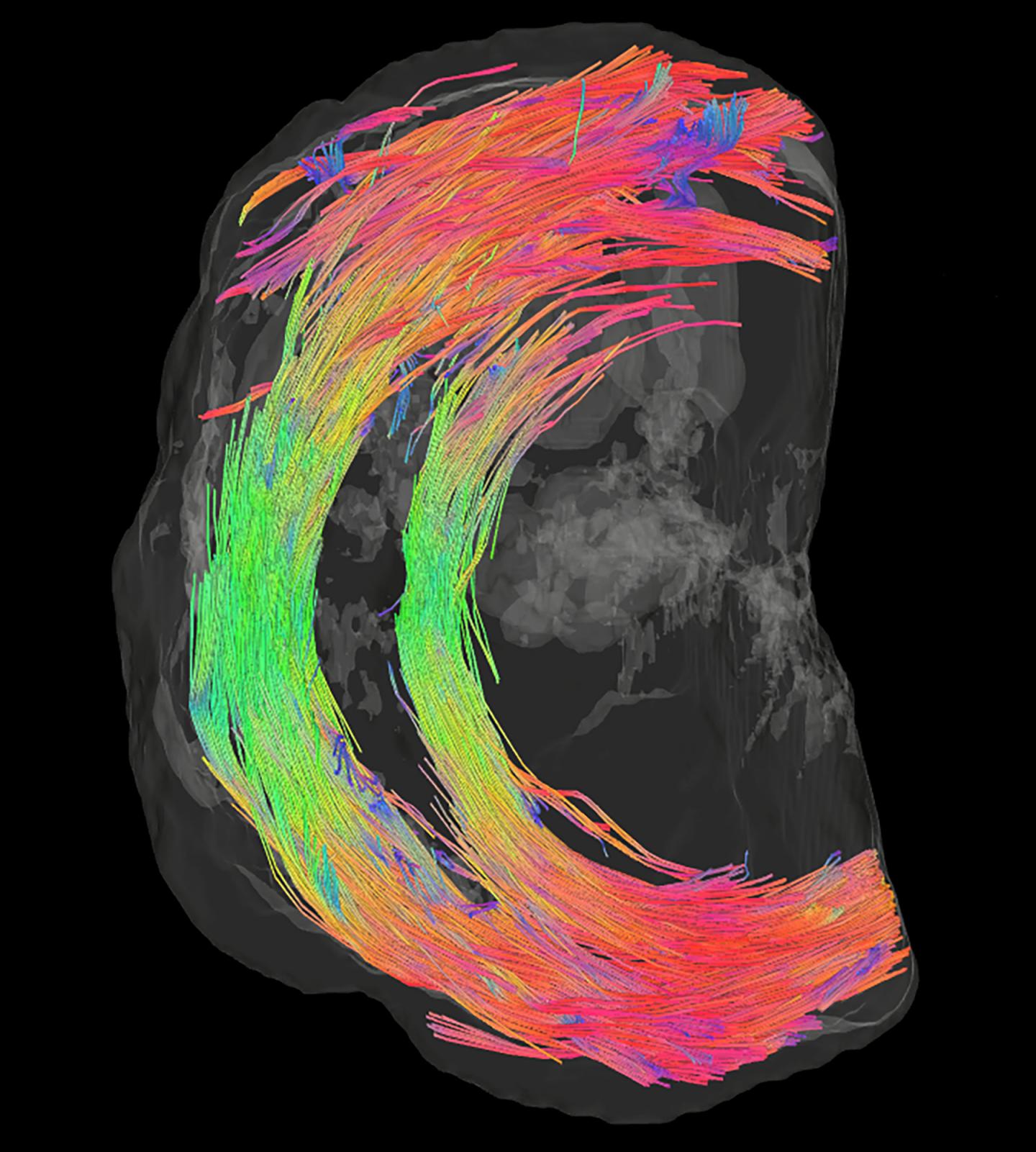
Credit: University of Leeds
Scientists are using the latest imaging techniques usually used to map the brain to try and understand why some pregnant women miscarry or go into early labour.
They have developed 3D images of the cervix, the load bearing organ which lies at the base of the womb and stops a developing baby from descending into the birth canal before the due date.
Around a quarter of miscarriages during the fourth to sixth month of pregnancy (mid-trimester) occur because of weaknesses in the cervix.
The researchers at the University of Leeds hope by developing a detailed image of its structure, they can develop ways of monitoring women for signs of potential problems before they become pregnant.
Mr Nigel Simpson, Associate Professor in Obstetrics and Gynaecology, said: "Ultrasound monitoring is used to identify women at risk – where their cervix is unable to support the pregnancy. But little is known about why that problem develops.
"This research is attempting to answer that question."
MRI techniques were used to create 3D images of the cervix. This is the first time extremely high resolution imaging has been used to understand the detailed micro-structure of this organ.
The research is published in the international obstetrics and gynaecology journal, BJOG.
James Nott, from the Faculty of Medicine and Health and lead author, said: "A lot of our understanding of the biology of the cervix is rooted in research carried out 50 years ago.
"By applying the imaging techniques that have been used on the brain, we can get a much clearer understanding of the tissue architecture that gives the cervix its unique biomechanical properties."
The images reveal a fibrous structure running along the upper part of the cervix. The fibres are much more pronounced near to where it joins the womb. The fibres are made of collagen and smooth muscle and form a ring around the upper aspect of the cervical canal.
During pregnancy, these fibres provide a strong supporting barrier – keeping the foetus and amniotic sac in place and preventing micro-organisms from entering the uterus.
The images reveal that these support tissues are less prominent further down the cervix as it joins the birth canal.
During labour, the body releases chemicals which result in the cervix opening and allowing the baby to enter the birth canal.
But there are medical conditions where earlier in the pregnancy, the cervix fails to support the baby, leading to a miscarriage or premature birth.
Mr Simpson said: "This study's findings have encouraged us to explore new imaging techniques to check the integrity of these fibres before or during pregnancy in order to identify at-risk mums, intervene earlier, and so prevent late pregnancy loss and pre-term birth."
The study was funded by Cerebra, the charity for children with brain conditions.
The scientists used diffusion tensor MRI, which is a technology that can remotely sense different types of tissue based on their water content.
###
Notes for Editors
For more information, please contact David Lewis in the University press office on 0113 343 8059 or by email [email protected]
MRI images of the cervix are available by following this link: https://drive.google.com/drive/folders/1_WUKsEPCUREHEeGGviHuNpZVG9c-goLV?usp=sharing
Image details
Image 1 is the top of the cervix near the womb – and shows a view horizontally across the cervical canal. At this point, the cervix has to provide support to the womb and the developing foetus – and the image reveals a lot of fibres, giving strength and support.
The fibres become less pronounced further from the womb, images 2 and 3.
The study was based on tissue samples donated by seven women who were having a hysterectomy. Between them, they had had 14 children – 13 had normal deliveries and one had a Caesarean.
The paper – Diffusion-Tensor Imaging Determines Three-Dimensional Architecture of the Human C: A Cross-Sectional Study. It is available here.
University of Leeds
The University of Leeds is one of the largest higher education institutions in the UK, with more than 33,000 students from more than 150 different countries, and a member of the Russell Group of research-intensive universities.
We are a top ten university for research and impact power in the UK, according to the 2014 Research Excellence Framework, and are in the top 100 for academic reputation in the QS World University Rankings 2018. Additionally, the University was awarded a Gold rating by the Government's Teaching Excellence Framework in 2017, recognising its 'consistently outstanding' teaching and learning provision. Twenty-four of our academics have been awarded National Teaching Fellowships – more than any other institution in England, Northern Ireland and Wales – reflecting the excellence of our teaching. http://www.leeds.ac.uk
Media Contact
Davids Lewis
[email protected]
44-011-334-38059
@universityleeds
http://www.leeds.ac.uk
Related Journal Article
http://dx.doi.org/10.1111/1471-0528.15002





